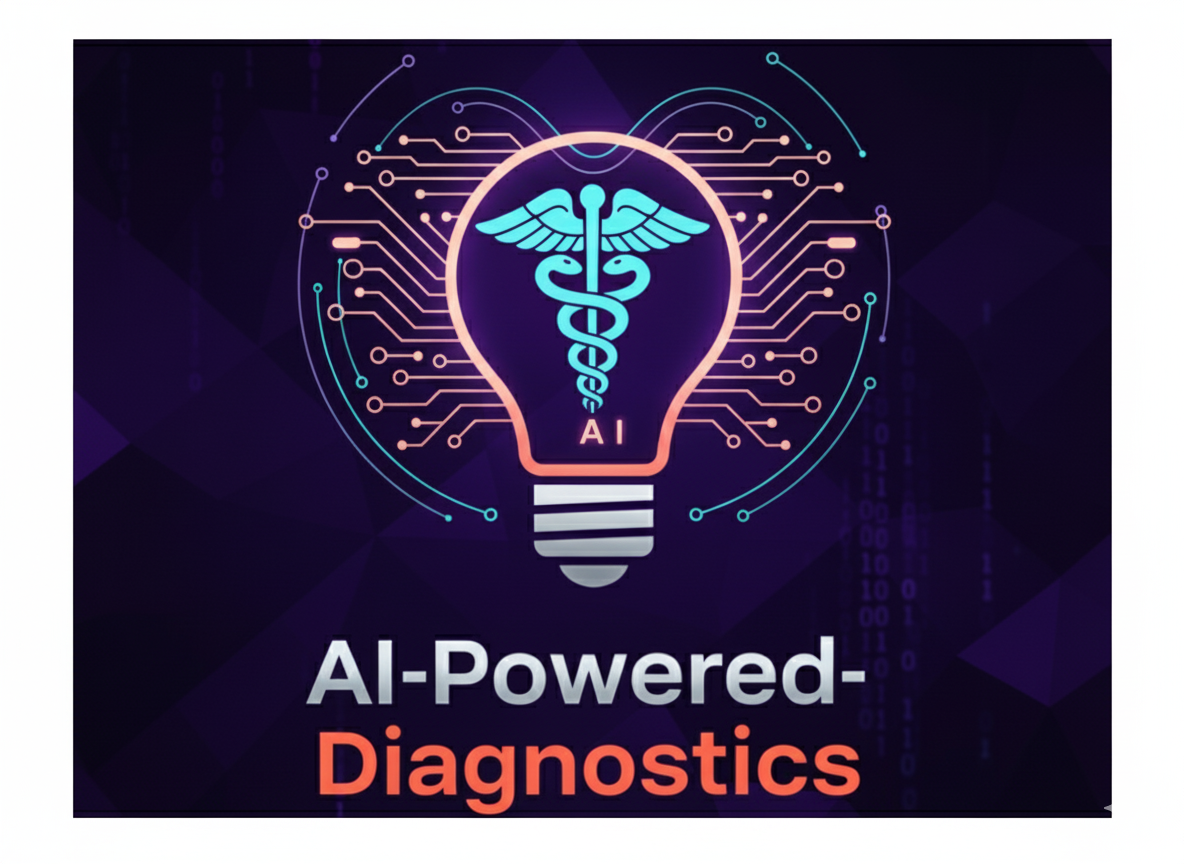
🩺 GenAI-Medical-Symptom-Checker

🩺 GenAI-Medical-Symptom-Checker

Disclaimer: This project is a research prototype. It does not provide medical advice, diagnosis, or treatment. It is not a medical device and must be used under clinician supervision or for educational purposes only.
1) Problem Statement
Early, low-stakes triage and health education are often inaccessible. A GenAI symptom checker aims to:
- Translate layperson descriptions into structured clinical signals (symptoms, onset, severity).
- Offer risk-aware guidance (self-care vs. seek care now vs. emergency).
- Generate explainable outputs with uncertainty disclosure and safety rails.
2) Conceptual Scope (What it should/shouldn’t do)
Should:
- Collect symptoms with clarifying questions.
- Map text to standard clinical vocabularies (e.g., SNOMED CT/ICD terms).
- Estimate likelihood ranges for common, non-emergent conditions.
- Provide next-step guidance and red-flag detection with clear rationales.
- Encourage professional evaluation; surface urgent care triggers.
Shouldn’t:
- Provide definitive diagnoses or prescriptions.
- Replace clinician assessment, emergency services, or local guidelines.
- Handle high-risk differentials without strong fail-safes (route to “seek care now”).
3) Theoretical Architecture (High-Level)
- Input Layer
- Free-text complaint + optional metadata (age band, sex at birth, pregnancy status, vitals if available).
- Safety filter on input (self-harm, overdose, child health, pregnancy complications → urgent escalation).
- Clinical NLP & Structuring
- Symptom extraction (NER) → “fever (38.5°C), 3 days, intermittent; dry cough; sore throat.”
- Temporal parsing (onset, duration), severity scales, aggravators/relievers.
- Ontology mapping (SNOMED CT / ICD-10) with confidence.
- Reasoning & Triage Engine
- Hybrid approach:
- Knowledge-guided graph: symptom–condition relationships, red-flag rules.
- Probabilistic layer: Bayesian/likelihood estimates over common conditions (with wide priors and uncertainty).
- LLM chain-of-thought (hidden) + tool use for hypothesis generation and consistency checks.
- Guardrails:
- Deterministic red-flag rules override (e.g., chest pain + dyspnea → emergency).
- Uncertainty calibration and refusal when confidence is low.
- Hybrid approach:
- Explanation & Guidance
- Plain-language summary of what was considered and why.
- Care-setting recommendation (self-care, urgent care, ER) with safety net advice and return precautions.
- Localization hooks for region-specific helplines (not bundled here).
- Safety, Privacy, and Governance
- PHI minimization; encryption at rest/in transit (theory design).
- Audit logs for prompts, outputs, and rule-based overrides.
- Bias, safety, and performance monitoring.
4) Knowledge Sources (Conceptual)
- Public health guidelines (triage criteria, red flags).
- Clinical ontologies (SNOMED CT, ICD-10) for consistent labeling.
- Peer-reviewed evidence summaries for common primary-care presentations.
- No direct training on private patient data unless governed by strict consent and compliance frameworks.
5) Reasoning Patterns
- Differential generation: from structured symptoms to candidate conditions.
- Elimination by red flags: immediate escalation when matched.
- Evidence aggregation: tally supportive/contradictory findings; compute qualitative likelihoods (low/medium/high).
- Counterfactual prompts: ask targeted follow-ups to reduce ambiguity.
- Uncertainty disclosure: present ranges, not absolutes.
6) Evaluation Strategy (Non-clinical, Research-only)
- Synthetic vignettes covering common complaints + rare but critical red flags.
- Checklist scoring:
- Correct identification of any red flag (recall-weighted).
- Appropriateness of triage level (confusion matrix).
- Consistency and absence of hallucinated tests/treatments.
- Readability and empathy metrics (Flesch/Kincaid + rubric).
- Human review: clinicians rate outputs (safety first).
- Drift monitoring: periodic re-checks as models/knowledge evolve.
Note: These are surrogate metrics; not a substitute for clinical validation or regulatory approval.
7) Error Taxonomy & Mitigations
- Missed red flag → hard-coded rule overrides; multi-pass safety checks.
- Over-reassurance → conservative priors + “when to seek care” blocks.
- Hallucination → retrieval-augmented grounding; citation requirements; refusals when unsure.
- Bias (age, sex, race proxies) → stratified evaluation, fairness audits, balanced exemplars.
- Over-triage → acceptable trade-off but monitored to avoid burdening services.
8) Ethical Use & Compliance (Conceptual)
- Non-maleficence: prefer false positives over false negatives for high-risk symptoms.
- Autonomy: transparent limitations; encourage clinician consultation.
- Justice: evaluate across demographics; accessible language.
- Privacy: minimal data retention; user control over deletion/export.
- Regulatory posture: research tool; if productized, pursue appropriate regulatory pathways (e.g., QMS, clinical studies).
9) Privacy & Security (Design Goals)
- Data minimization; optional local inference/de-identification.
- Encryption in transit/at rest; role-based access to logs.
- No third-party sharing without consent; clear data retention windows.
- Adversarial testing against prompt-injection and data leakage.
10) Human-in-the-Loop
- Route ambiguous or high-risk cases to a clinician review queue.
- Provide editable rationale and structured data for faster clinician triage.
- Learn safely from clinician feedback (controlled updates, no blind self-training).
11) Limitations
- Not calibrated for rare diseases or complex comorbidities.
- Cultural/linguistic nuances can affect symptom descriptions.
- Real-world performance depends on deployment context and population.
12) Future Work
- Calibrated uncertainty (conformal prediction for triage).
- Personalization with explicit consent (PMH, meds, allergies).
- Multimodal inputs (vitals/wearables) with strict privacy controls.
- Localization to guidelines and care pathways by region.
- Prospective clinical study with IRB oversight.
13) Repository Structure (Theory-Level)
/docs/ # Model cards, evaluation rubrics, risk registry
/data/ # Schema & ontology mappings (no PHI; placeholders only)
/policies/ # Safety, privacy, and governance docs
/notebooks/ # Research analyses (theoretical examples)
/src/ # Modular components: nlp/, triage/, safety/, explain/
/eval/ # Synthetic vignettes, metrics, reports
14) Citation (Example Template)
If you use this work, please cite:
GenAI-Medical-Symptom-Checker: A Research Framework for Safe, Explainable, and Privacy-Preserving AI Triage. (Year). GitHub repository. URL
Contact: Bhavesh Kallururate real-world implementation of Generative AI for personal assistants, showing how context + intelligence = true automation.

Recent Comments